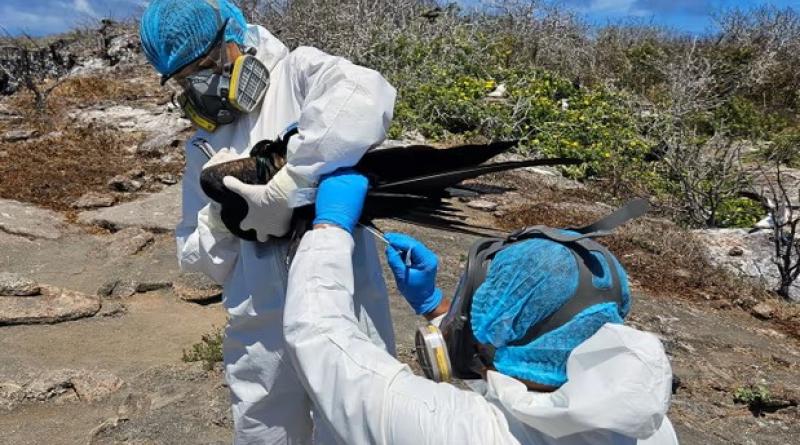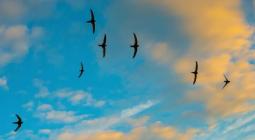Galápagos Islands tightens biosecurity as avian flu threatens unique species

Scientists confirm three birds have died from virus as park authorities redouble efforts to protect islands’ endemic birds
National park authorities on the Galápagos Islands have heightened biosecurity measures to protect the archipelago’s unique fauna from the deadly H5N1 strain of avian influenza after scientists confirmed that three birds had died from the virus.
“From preliminary tests of the five specimens, three of them have tested positive for H5N1 avian influenza,” Danny Rueda, director of the Galápagos national park told the Guardian. Two frigate birds and one red-footed booby were confirmed to have died from the virus on Tuesday, after samples were sent to Guayaquil on the Ecuadorian mainland for examination.
Park guards and veterinarians are redoubling efforts to protect the islands’ 78 species of endemic and native birds, including flightless cormorants, the only species of penguin in the northern hemisphere and one of the largest albatross colonies in the world.
The Galápagos Islands’ unique bird species were observed by Charles Darwin in 1835 when he visited the isolated archipelago on HMS Beagle and helped him set out his theory of evolution by natural selection in On the Origin of Species. They are considered particularly vulnerable due to their low immunity, small populations and the effect of rising ocean temperatures.
Scientists say the virus was probably brought to the islands by migratory birds. Last year, Ecuador declared an emergency due to outbreaks of avian influenza on farms. In neighbouring Peru, the highly contagious virus ripped through seabird populations, killing as many as 200,000 as well as decimating marine mammals such as sea lions.

The Galápagos national park activated emergency health protocols on Sunday following the report of dozens of dead and sick birds on two islands, Wolf and Genovesa, in the northern part of the Pacific archipelago, which lies about 1,000km from the South American continent.
Rueda said red-footed boobies were showing a “higher number of dead birds but also more symptoms [such as] erratic behaviour” characteristic of bird flu.
Two visitor sites were closed on Española Island, the only place where the critically endangered waved albatross breeds, though there were no confirmed cases of the birds with the virus.
“Our main worry is for the endemic species,” said Rueda. “Their populations are quite small and are restricted to the Galápagos.”
“It is very worrying to find a dead bird or a bird that has given a positive result, so we have to triple the biosecurity efforts on tourist boats, for tourists and crew members,” he said.
Gustavo Jiménez, principal investigator for the Charles Darwin Foundation, said many species including boobies, albatross and the endangered Galápagos penguin were facing scarcer food sources due to El Niño, and the resulting stress made them more susceptible to pathogens such as avian flu.
“The endemic species are very sensitive to any disease,” he said. “Our best defence is prevention.”
Scientists also fear that, as it has on the mainland, the virus could jump to endangered Galápagos sea lions and fur seals.
A warning has been issued calling on tourists visiting the Unesco Natural Heritage of Humanity site not to try to touch affected birds. Avian influenza can be transmitted to humans.
Federico Angermeyer, a tour operator in the archipelago, said the disease’s landfall could hurt tourism, the islands’ principal economic activity.
“The impact of the [Covid-19] pandemic is not over and bird flu is going to be another big blow,” he said by phone.
Photograph: Parque Nacional Galápagos/AFP/Getty Images - Scientists say the virus was likely brought to the islands by migratory birds.





